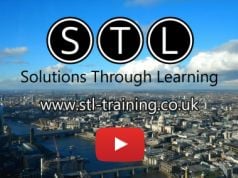98.7% Of all customers recommend us, we're so confident about our results we publish all reviews and stats
View Live Stats View Reviews
 Mastering the Art of Closing Incoming Calls
Mastering the Art of Closing Incoming Calls
Face to face / Virtual public schedule & onsite training. Restaurant lunch included at STL venues.
From £495 List price £650
- 1 day Instructor-led workshop
- Courses never cancelled
- Restaurant lunch
Syllabus
Who is this course for?
This one-day workshop is ideal for professionals who frequently interact with customers over the phone, including customer service representatives, sales teams, reception staff, and call centre agents.
It is designed for those looking to enhance their communication skills, effectively handle customer inquiries, and close calls successfully.
Managers and team leaders who supervise telephone-based roles will also benefit from understanding the techniques taught, enabling them to better support their teams.

Benefits
Attending this course will equip participants with essential skills to improve their telephone interactions, leading to enhanced customer satisfaction and increased efficiency in handling calls.Attendees will learn practical techniques for building rapport, managing objections, and closing calls effectively, which can directly contribute to better customer relationships and potential business growth.
Additionally, the course provides strategies for dealing with difficult callers, ensuring that participants can maintain professionalism and turn challenging situations into positive outcomes.
Course Syllabus
Fundamentals of Effective Telephone Communication
Importance of first impressions
Professional telephone etiquette
Structuring a call: opening, information gathering, and closing
Building Rapport and Active Listening
Techniques for building rapport over the phone
Effective listening skills and responding to customer cues
Practicing active listening
Handling Objections and Closing Techniques
Identifying common objections and strategies to overcome them
Various closing techniques to ensure customer satisfaction
Practical activities to apply closing techniques
Dealing with Difficult Callers
Strategies for staying calm under pressure
Techniques for handling angry or unhappy customers
Best practices for turning a negative call into a positive outcome
Action Planning
Create a tangible action plan with next steps
Prices & Dates
What you get
"What do I get on the day?"
Arguably, the most experienced and highest motivated trainers.
Face-to-face training
Training is held in our modern, comfortable, air-conditioned suites.
Lunch, breaks and timing
A hot lunch is provided at local restaurants near our venues:
- Bloomsbury
- Limehouse
Courses start at 9:30am.
Please aim to be with us for 9:15am.
Browse the sample menus and view joining information (how to get to our venues).
Refreshments
Available throughout the day:
- Hot beverages
- Clean, filtered water
- Biscuits
Virtual training
Regular breaks throughout the day.
Learning tools
In-course handbook
Contains unit objectives, exercises and space to write notes
24 months access to trainers
Your questions answered on our support forum.
Training formats & Services
Training Formats & Services
|
Learning & Development Resources
Soft Skills Blog
- How Relationship Building creates SALES in ABUNDANCE
- A Structured Approach to Successful Telephone Calls
Infographics
Training manual sample
Below are some extracts from our Mastering the Art of Closing Incoming Calls manual.
1. The
Assumptive Close
Description: This
technique involves assuming the prospect is ready to buy and proceeding with
the final steps as if the decision has already been made.
How to Use:
- Example: “When would you like to start the implementation—next Monday or
the following week?”
- Best For: Situations where the prospect has shown
strong interest and engagement.
Benefits:
- Projects confidence and helps the
prospect mentally commit to the purchase.
- Creates a smoother transition to closing
by assuming the sale is a done deal.
2. The
Alternative Choice Close
Description: Offer the
prospect a choice between two or more options, making it easier for them to
decide while steering them towards a decision.
How to Use:
- Example: “Would you prefer the standard package or the premium package
with additional features?”
- Best For: When the prospect is on the fence about
making a purchase.
Benefits:
- Simplifies the decision-making process by
narrowing options.
- Focuses the prospect on choosing between
options rather than deciding whether to buy.
3. The
Urgency Close
Description: Create a
sense of urgency by highlighting limited-time offers or deadlines, encouraging
the prospect to act quickly.
How to Use:
- Example: “We’re offering a 20% discount for orders placed before the end
of the month.”
- Best For: Situations where prospects are hesitant
or need a push to finalise their decision.
Benefits:
- Encourages immediate action by leveraging
time-sensitive offers.
- Helps prospects overcome procrastination
and make a commitment.
4. The
Summary Close
Description: Summarise
the key benefits and features of your product or service before asking for the
sale. This reinforces the value and addresses any lingering doubts.
How to Use:
- Example: “To recap, you’ll get 24/7 customer support, a 2-year warranty,
and free upgrades with this package. Shall we proceed with the purchase?”
- Best For: When the prospect needs a final
reassurance of the value being offered.
Benefits:
- Reinforces the value proposition and
addresses any remaining concerns.
- Provides a clear overview that helps the
prospect feel more confident about their decision.
5. The
Trial Close
Description: Test the
prospect’s readiness to buy by asking questions that gauge their level of
interest and commitment.
How to Use:
- Example: “How does this solution fit with your current needs?” or “What do
you think about the features we’ve discussed?”
- Best For: During conversations when you need to
assess the prospect’s readiness and address any objections.
Benefits:
- Provides insights into the prospect’s
thoughts and readiness.
- Allows you to address objections or
concerns before making a final ask.
6. The
Direct Close
Description: Simply
ask for the sale directly and clearly. This straightforward approach can be
effective when the prospect is already convinced of the value.
How to Use:
- Example: “Are you ready to move forward with this purchase today?”
- Best For: When you’ve addressed all concerns and
the prospect is ready to make a decision.
Benefits:
- Provides a clear and direct path to
closing.
- Avoids ambiguity and helps expedite the
decision-making process.
7. The
Concession Close
Description: Offer a
concession or compromise to address a specific objection or make the deal more
attractive.
How to Use:
- Example: “If you sign up today, I can include an additional month of
service at no extra cost.”
- Best For: When the prospect is close to making a
decision but needs a final incentive.
Benefits:
- Helps overcome last-minute objections by
adding extra value.
- Demonstrates flexibility and willingness
to meet the prospect’s needs.
8. The
Question Close
Description: Use a
question to lead the prospect towards making a decision. This technique
involves asking a question that implies the prospect is ready to proceed.
How to Use:
- Example: “What date would you like to schedule the installation?” or
“Which payment plan works best for you?”
- Best For: When you want to prompt the prospect to
finalise their decision by focusing on logistical details.
Benefits:
- Encourages the prospect to think about
the next steps.
- Helps move the conversation from a
discussion to action.
Which technique do you feel most comfortable with and why?
We will explore and practice each of these techniquesThanks. Your download will begin shortly.
Please help us
Share or create a link to this manual today!
Just follow these simple instructions...








